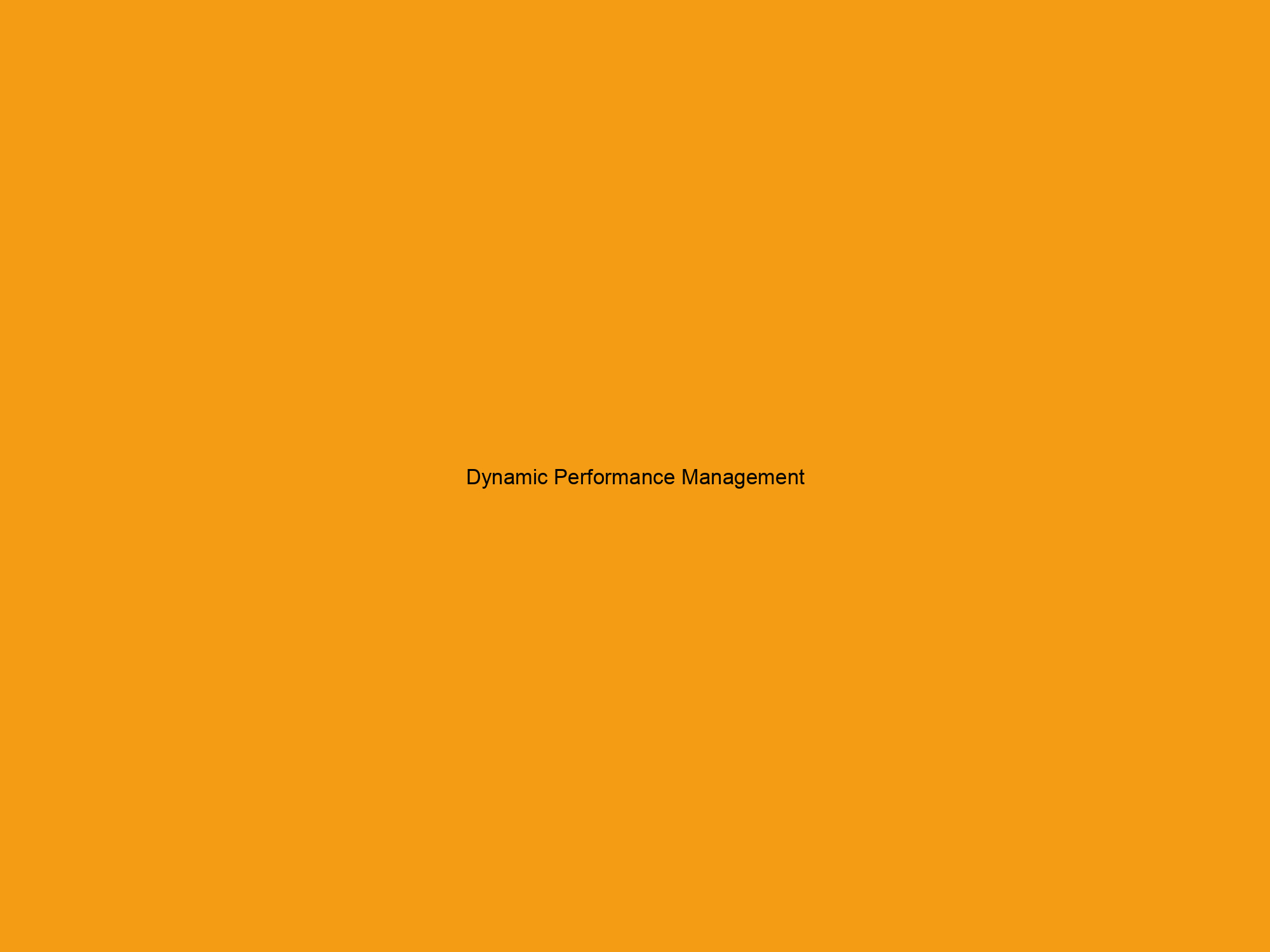Dynamic Performance Management is a modern approach to managing employee performance that focuses on continuous feedback, coaching, and development to drive individual and organizational success. Unlike traditional performance management systems that rely on annual reviews and ratings, dynamic performance management emphasizes real-time feedback and ongoing conversations between managers and employees. This approach aims to create a more agile and responsive work environment where employees are empowered to grow, learn, and excel in their roles.
The concept of performance management has evolved over the years, with early practices dating back to the Industrial Revolution when managers began using performance appraisals to assess employee productivity. In the mid-20th century, companies started implementing formal performance management systems to set goals, evaluate performance, and provide feedback. However, these traditional methods often fell short in addressing the changing needs of today’s workforce, leading to the emergence of dynamic performance management as a more effective and efficient way to drive performance and engagement.
Key Takeaways
- Dynamic Performance Management is a modern approach to managing employee performance that emphasizes continuous feedback and improvement.
- Dynamic Performance Management is important in today’s workplace because it helps organizations stay agile and adapt to changing business needs.
- Key components of Dynamic Performance Management include goal-setting, regular feedback, coaching and development, and data-driven performance tracking.
- Benefits of implementing Dynamic Performance Management include improved employee engagement, productivity, and retention, as well as better alignment with organizational goals.
- Common challenges in implementing Dynamic Performance Management include resistance to change, lack of buy-in from leadership, and difficulty in measuring success.
The Importance of Dynamic Performance Management in Today’s Workplace
In today’s fast-paced and ever-changing work environment, the traditional approach to performance management is no longer sufficient. The nature of work has evolved, with employees taking on more diverse roles and responsibilities that require continuous learning and adaptation. Dynamic performance management recognizes the need for ongoing feedback and improvement to help employees stay engaged, motivated, and productive.
Technology plays a crucial role in enabling dynamic performance management practices. With the rise of digital tools and platforms, managers can now provide instant feedback, track progress in real-time, and identify areas for improvement more effectively. This shift towards a more tech-driven approach to performance management aligns with the expectations of modern employees who are accustomed to instant communication and personalized experiences.
Key Components of Dynamic Performance Management
1. Goal setting and alignment: Dynamic performance management starts with setting clear, achievable goals that are aligned with both individual aspirations and organizational objectives. By establishing SMART (Specific, Measurable, Achievable, Relevant, Time-bound) goals, employees have a roadmap for success and can track their progress effectively.
2. Continuous feedback and coaching: Regular feedback is essential for employee growth and development. Managers should provide ongoing coaching to help employees improve their skills, address challenges, and capitalize on their strengths. This continuous feedback loop fosters a culture of learning and collaboration within the organization.
3. Performance tracking and measurement: Tracking performance metrics allows managers to assess progress towards goals, identify areas for improvement, and recognize achievements. By leveraging data-driven insights, organizations can make informed decisions about resource allocation, training needs, and talent development strategies.
4. Employee development and growth: Dynamic performance management prioritizes employee development by offering opportunities for learning, training, and career advancement. By investing in the growth of their workforce, organizations can enhance employee engagement, retention, and overall performance.
Benefits of Implementing Dynamic Performance Management
Implementing dynamic performance management practices can yield a wide range of benefits for organizations and their employees:
1. Improved employee engagement and motivation: By providing regular feedback, coaching, and development opportunities, employees feel valued and supported in their roles. This leads to higher levels of engagement, motivation, and job satisfaction.
2. Increased productivity and performance: When employees receive timely feedback on their performance and have clear goals to work towards, they are more likely to be productive and achieve better results. Dynamic performance management helps optimize individual and team performance by focusing on continuous improvement.
3. Better alignment with organizational goals: By aligning individual goals with the broader objectives of the organization, dynamic performance management ensures that everyone is working towards a common purpose. This alignment fosters collaboration, innovation, and strategic growth within the company.
4. Enhanced employee development and retention: Investing in employee development through dynamic performance management practices can lead to higher retention rates and lower turnover costs. When employees see opportunities for growth and advancement within the organization, they are more likely to stay engaged and committed to their work.
Common Challenges in Implementing Dynamic Performance Management
While dynamic performance management offers numerous benefits, organizations may encounter several challenges when implementing these practices:
1. Resistance to change: Employees and managers who are accustomed to traditional performance management systems may resist adopting new approaches that require more frequent feedback and coaching. Overcoming resistance to change requires clear communication, training, and support from leadership.
2. Lack of buy-in from employees and managers: Without buy-in from all levels of the organization, dynamic performance management initiatives may struggle to gain traction. It is essential to involve employees in the process, address their concerns, and demonstrate the value of these practices in driving individual and organizational success.
3. Inadequate training and support: Managers may lack the necessary skills or resources to effectively implement dynamic performance management practices. Providing training programs, coaching sessions, and ongoing support can help build confidence among managers and ensure successful implementation across the organization.
4. Inconsistent implementation across the organization: Inconsistencies in how dynamic performance management practices are applied can lead to confusion, frustration, and inequities among employees. Establishing clear guidelines, processes, and accountability measures can help ensure consistency in implementation and evaluation.
Best Practices for Successful Dynamic Performance Management

To overcome common challenges and maximize the benefits of dynamic performance management, organizations can follow these best practices:
1. Clear communication and expectations: Communicate the purpose, goals, and benefits of dynamic performance management initiatives clearly to all stakeholders. Set expectations for feedback frequency, coaching sessions, goal setting processes, and performance tracking methods.
2. Regular check-ins and feedback: Schedule regular check-in meetings between managers and employees to discuss progress towards goals, address challenges or concerns, provide feedback on performance, and celebrate achievements. These ongoing conversations foster trust, collaboration, and accountability.
3. Training and support for managers and employees: Invest in training programs that equip managers with the skills needed to effectively coach employees, provide constructive feedback, set SMART goals, track performance metrics accurately. Offer resources such as online courses or workshops for employees to enhance their skills development.
4. Consistent implementation evaluation: Monitor the implementation of dynamic performance management practices regularly through surveys feedback sessions with employees managers stakeholders evaluate effectiveness identify areas improvement make adjustments as needed ensure consistency across organization.
How to Set Goals Objectives for Dynamic Performance Management
Setting goals objectives is a critical component of dynamic performance management Here are some best practices for goal setting:
1 SMART goal setting: Ensure that goals are Specific Measurable Achievable Relevant Time-bound (SMART) This framework helps clarify expectations provides clear direction for employees aligns individual goals with organizational objectives.
2 Aligning individual goals with organizational goals: Connect individual goals with broader company initiatives ensure that everyone is working towards common purpose This alignment fosters collaboration innovation strategic growth within organization.
3 Regular review adjustment goals: Review progress towards regularly adjust goals needed based on changing priorities business needs By staying flexible adaptable goal setting process organizations can respond quickly evolving market conditions employee capabilities organizational objectives.
VIII The Role Feedback Dynamic Performance Management
Feedback plays crucial role dynamic performance management Here importance ongoing feedback different types best practices giving receiving feedback:
1 The importance ongoing feedback: Regular timely feedback essential helping employees improve their skills address challenges capitalize strengths Managers should provide constructive positive reinforcement well opportunities growth development foster culture continuous learning improvement.
2 Different types feedback (positive constructive etc ): Feedback come various forms including positive reinforcement constructive criticism developmental opportunities recognition achievements Managers should tailor their approach based on individual preferences communication styles ensure that feedback is received positively acted upon effectively.
3 Best practices giving receiving feedback: When giving feedback be specific actionable focus behaviors rather than personalities Use examples illustrate points offer suggestions improvement rather criticism When receiving feedback listen openly without becoming defensive ask clarification reflect on insights apply learnings future actions improvements.
IX Performance Tracking Measuring Success Dynamic Performance Management
Tracking measuring success key components dynamic performance management Here different methods tracking metrics measuring success regular evaluation adjustment processes:
1 Different methods tracking performance: Organizations leverage variety tools techniques track employee progress towards goals Some common methods include self-assessments peer reviews 360-degree evaluations Key metrics may include productivity quality customer satisfaction engagement retention rates.
2 Metrics measuring success: Define key indicators success based on organizational objectives industry benchmarks employee capabilities Some metrics measure include revenue growth cost savings project completion rates employee turnover rates These data points help assess effectiveness dynamic performance management initiatives identify areas improvement optimization.
3 Regular evaluation adjustment processes: Evaluate effectiveness dynamic performance management processes regularly gather feedback stakeholders review key metrics adjust strategies needed By staying agile responsive organizations can adapt changing market conditions employee needs drive continuous improvement innovation within organization.
X Future Trends Innovations Dynamic Performance Management
Future trends innovations dynamic performance management will shape way organizations manage employee success Here role AI machine learning use data analytics importance employee well-being work-life balance:
1 The role AI machine learning: Artificial intelligence AI machine learning ML technologies play increasingly important role automating streamlining various aspects dynamic performance management From predictive analytics personalized recommendations AI ML tools help identify patterns trends optimize decision-making processes enhance employee engagement productivity retention rates.
2 The use data analytics for performance management: Data analytics offer valuable insights into employee behavior preferences trends Organizations leverage data-driven approaches track measure success initiatives identify areas improvement optimize talent development strategies By analyzing patterns correlations data organizations make informed decisions drive continuous improvement innovation within organization.
3 The importance employee well-being work-life balance: Employee well-being work-life balance become top priorities organizations seek create healthy supportive work environments promote engagement retention productivity Employees thrive environments prioritize mental physical emotional well-being Organizations invest wellness programs flexible work arrangements mindfulness training promote holistic approach employee development success Conclusion Implementing dynamic performancemanagement practices essential driving individual organizational success today’s fast-paced ever-changing workplace By focusing continuousfeedback coaching goal setting alignment organizations empoweremployees grow learn excel roles This modern approachperformance managementsupports ongoingdevelopment fosters culturecollaboration innovationwithin organization Call actionorganizations adoptdynamic performancemanagement practices stay competitive attract retain top talent meet evolving demands marketplace The importance of employee well-being and work-life balance has become a top priority for organizations as they seek to create healthy and supportive work environments that promote engagement, retention, and productivity. Employees thrive in environments that prioritize their mental, physical, and emotional well-being. Organizations that invest in wellness programs, flexible work arrangements, and mindfulness training promote a holistic approach to employee development and success. In conclusion, implementing dynamic performance management practices is essential for driving individual and organizational success in today’s fast-paced and ever-changing workplace. By focusing on continuous feedback, coaching, goal setting, and alignment, organizations empower employees to grow, learn, and excel in their roles. This modern approach to performance management supports ongoing development and fosters a culture of collaboration and innovation within the organization. It is crucial for organizations to adopt dynamic performance management practices to stay competitive, attract and retain top talent, and meet the evolving demands of the marketplace.

